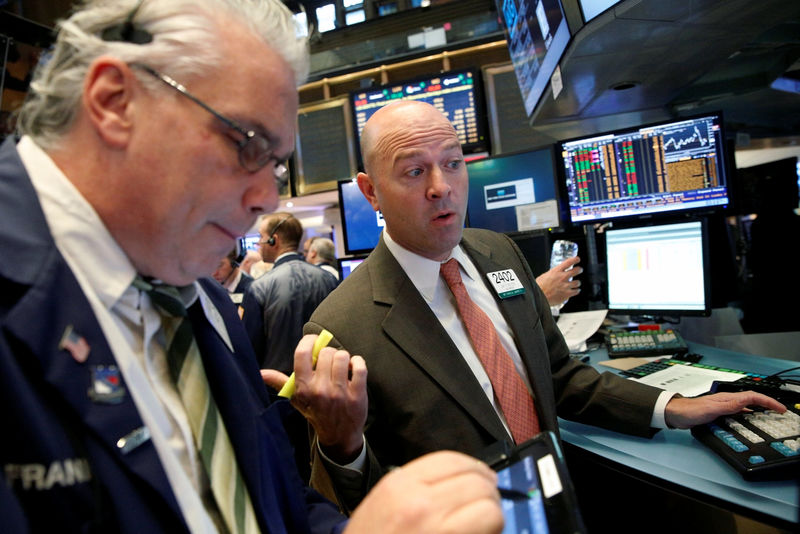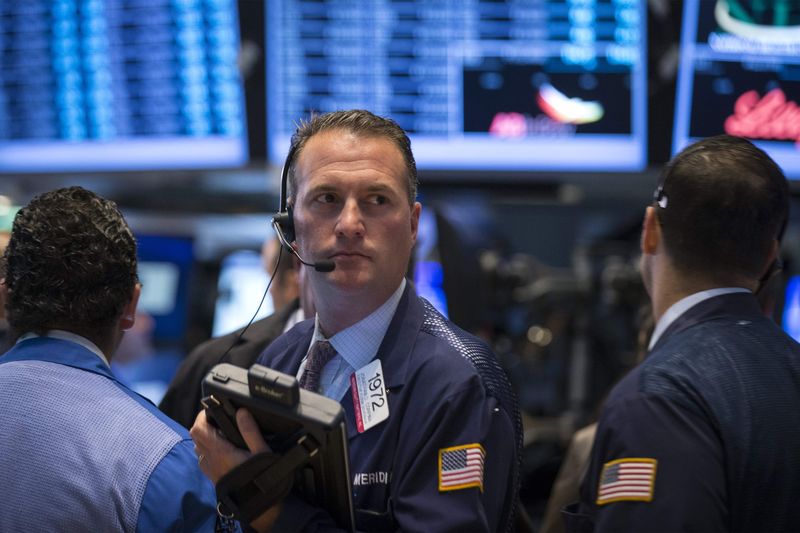By Lewis Krauskopf
(Reuters) - The S&P 500 ended lower on Wednesday for a seventh straight session, its longest such streak in five years, as the Federal Reserve signaled it could hike interest rates in December and the uncertain U.S. election continued to cloud the market's outlook.
The U.S. central bank held interest rates steady, but said the economy had gained steam and job gains remained solid, expressing more optimism that inflation was moving toward its 2 percent target.
The decision was broadly in line with expectations of investors, who have been discounting a hike at this meeting but generally bracing for one in December.
It was the last Fed decision before next week's presidential election between Democrat Hillary Clinton and Republican Donald Trump, a race that has rattled markets as it has appeared to grow closer in the past week.
"With the Fed meeting, basically they just teed it up for an increase in December, so there was really nothing unusual ... This market right now is more on the election and any technical indicators," said Alan Lancz, president of investment advisory firm Alan B. Lancz & Associates in Toledo, Ohio.
The Dow Jones industrial average (DJI) fell 77.46 points, or 0.43 percent, to 17,959.64, the S&P 500 (SPX) lost 13.78 points, or 0.65 percent, to 2,097.94 and the Nasdaq Composite (IXIC) dropped 48.01 points, or 0.93 percent, to 5,105.57.
The S&P 500 closed below 2,100 for the first time since July 7.
“Any material drift from there might bring on further weakness and technical selling," Lancz said. “We’re getting in an area now where the market needs to see some support.”
In another negative technical sign for the market, the combined number of 52-week lows on the NYSE and Nasdaq jumped to the most since June and significantly outpaced the number of new highs.
The Fed's increasing confidence that prices were moving higher was reflected in its view that "inflation has increased somewhat since earlier this year" and the removal of its previous reference to inflation remaining low in the near term.
In September, Fed Chair Janet Yellen said that a move before year's end was likely as long as U.S. employment and inflation continue to strengthen.
“The market may be wondering if there's enough evidence of a stronger economy to warrant a rate hike versus a belief that Chair Yellen needs to replenish her toolkit in the event of a weakening economic backdrop,” said Quincy Krosby, market strategist at Prudential Financial (NYSE:PRU) in Newark, New Jersey.
The biggest sector decliners were utilities (SPLRCU), real estate <.SPLRCR> and telecommunications (SPLRCL) companies, which are high dividend-paying groups thought to be vulnerable in rising rate environments.
Energy (SPNY) fell 1 percent as oil prices fell.
In earnings news, Allergan (N:AGN) shares fell 5.2 percent after the drugmaker's disappointing results.
More than 8 billion shares changed hands in U.S. exchanges, above the 6.5 billion daily average over the last 20 sessions.
Declining issues outnumbered advancing ones on the NYSE by a 3.23-to-1 ratio; on Nasdaq, a 2.82-to-1 ratio favored decliners.

The S&P 500 posted 2 new 52-week highs and 11 new lows; the Nasdaq Composite recorded 19 new highs and 154 new lows.
